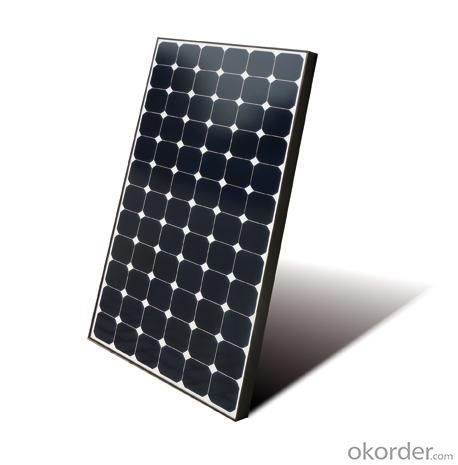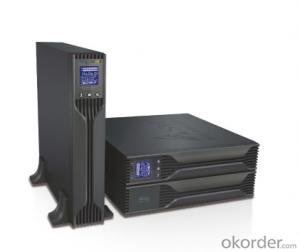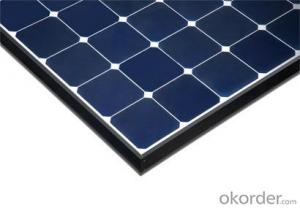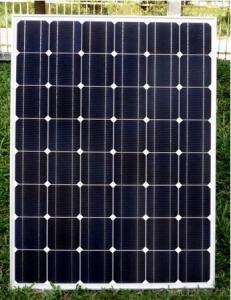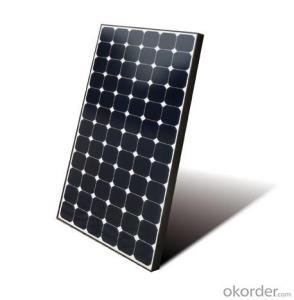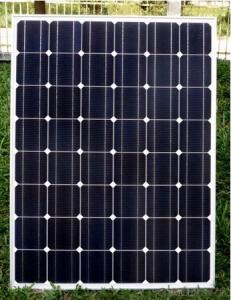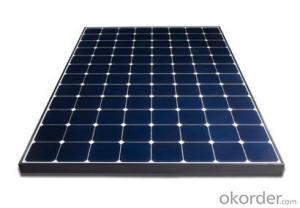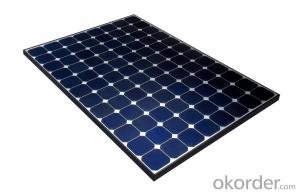Solar Energy Systems Utah - CNBM On Grid System 600W with Certificate UL TUV CE
- Loading Port:
- Shanghai
- Payment Terms:
- TT OR LC
- Min Order Qty:
- 100 watt
- Supply Capability:
- 1000 watt/month
OKorder Service Pledge
OKorder Financial Service
You Might Also Like
Specification
CNBM On Grid System 600W with Certificate UL TUV CE
Product description
A grid-connected photovoltaic power system, or grid-connected PV system is anelectricity generating solar PV system that is connected to the utility grid. A grid-connected PV system consists of solar panels, one or several inverters, a power conditioning unit and grid connection equipment. They range from small residential and commercial rooftop systems to large utility-scale solar power stations. Unlike stand-alone power systems, a grid-connected system rarely includes an integrated battery solution, as they are still very expensive. When conditions are right, the grid-connected PV system supplies the excess power, beyond consumption by the connected load, to the utility grid.
Connection of the photovoltaic power system can be done only through an interconnection agreement between the consumer and the utility company. The agreement details the various safety standards to be followed during the connection.[4]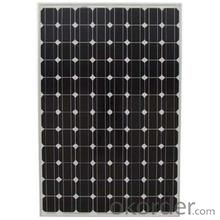
Application
Industrial
Commercial
Residential
Feature
Residential, grid-connected rooftop systems which have a capacity more than 10 kilowatts can meet the load of most consumers.[2] They can feed excess power to the grid where it is consumed by other users. The feedback is done through a meter to monitor power transferred. Photovoltaic wattage may be less than average consumption, in which case the consumer will continue to purchase grid energy, but a lesser amount than previously. If photovoltaic wattage substantially exceeds average consumption, the energy produced by the panels will be much in excess of the demand. In this case, the excess power can yield revenue by selling it to the grid. Depending on their agreement with their local grid energy company, the consumer only needs to pay the cost of electricity consumed less the value of electricity generated. This will be a negative number if more electricity is generated than consumed.[3] Additionally, in some cases, cash incentives are paid from the grid operator to the consumer.
Packaging
With carton and box
- Q: What is the role of solar thermal collectors in solar energy systems?
- The role of solar thermal collectors in solar energy systems is to capture and convert sunlight into usable heat energy. These collectors are designed to absorb solar radiation and transfer the heat to a fluid or air medium, which can then be used for various applications like heating water, space heating, or even powering steam turbines for electricity generation. Overall, solar thermal collectors play a crucial role in harnessing the sun's energy and providing a renewable and sustainable source of heat.
- Q: Can solar energy systems be used in areas with strict noise regulations?
- Yes, solar energy systems can be used in areas with strict noise regulations. Solar energy systems are typically silent as they do not have any moving parts, unlike traditional power generation systems such as generators. Therefore, they comply with noise regulations and can be installed and operated without causing any noise disturbances.
- Q: Can solar energy systems be used for charging mobile devices?
- Yes, solar energy systems can be used for charging mobile devices. Solar panels can convert sunlight into electricity, which can then be used to charge mobile devices through USB ports or power banks. This provides a sustainable and environmentally friendly solution for charging mobile devices, especially in areas without access to electricity grids.
- Q: How does the efficiency of solar panels vary based on the cleanliness?
- The efficiency of solar panels does vary based on cleanliness. When solar panels are clean and free from dirt, dust, and debris, they are able to absorb more sunlight and convert it into electricity more effectively. On the other hand, if solar panels are dirty or covered in grime, their efficiency decreases as the dirt blocks the sunlight and reduces the amount of energy that can be generated. Therefore, regular cleaning and maintenance of solar panels is essential to ensure optimal efficiency and maximum energy production.
- Q: What is the role of solar charge controllers in regulating the charging of batteries?
- The role of solar charge controllers is to regulate the charging of batteries by controlling the flow of electricity from the solar panels to the batteries. They ensure that the batteries are charged efficiently and safely by monitoring and adjusting the voltage and current levels. This helps prevent overcharging, which could damage the batteries, and also prevents over-discharging, which could lead to reduced battery life. Solar charge controllers also provide protection against voltage spikes, reverse current flow, and other potential issues, ensuring optimal charging and prolonging the lifespan of the batteries.
- Q: What is the role of solar energy systems in disaster resilience?
- Solar energy systems play a crucial role in disaster resilience by providing a reliable and sustainable source of power during and after emergencies. These systems can power critical infrastructure such as hospitals, emergency shelters, and communication networks, ensuring continuous operation and efficient response during disasters. Solar energy systems also reduce reliance on traditional power grids, which are vulnerable to damage and disruption during crises. Their ability to generate electricity independently enables communities to recover more quickly, reducing the impact of disasters and enhancing overall resilience.
- Q: Can solar energy systems be used in powering fire stations or police stations?
- Yes, solar energy systems can certainly be used to power fire stations or police stations. Solar panels can be installed on the rooftops of these buildings to harness sunlight and convert it into electricity. This renewable energy source can help reduce the reliance on traditional power grids and lower operational costs for these facilities. Additionally, solar energy systems can ensure a more sustainable and environmentally friendly power source for fire and police stations.
- Q: Are there any risks of electrical grounding issues with solar energy systems?
- Yes, there can be risks of electrical grounding issues with solar energy systems. Improper grounding or lack of proper grounding can lead to electrical shocks, system malfunctions, and even fire hazards. It is crucial to ensure that solar panels, inverters, and other electrical components are correctly grounded to minimize these risks and ensure the safe and efficient operation of the system.
- Q: How do solar energy systems impact energy consumption patterns?
- Solar energy systems have a significant impact on energy consumption patterns by reducing reliance on traditional fossil fuel sources. These systems generate clean and renewable energy, thereby reducing greenhouse gas emissions and mitigating the harmful effects of climate change. Additionally, solar energy encourages a shift towards decentralized energy production and encourages individuals and businesses to become more mindful of their energy consumption, leading to greater energy efficiency and conservation.
- Q: Can solar energy systems be used in areas with high levels of saltwater exposure?
- Yes, solar energy systems can be used in areas with high levels of saltwater exposure. However, it is important to use materials and components that are specifically designed to withstand the corrosive effects of saltwater. This can include using corrosion-resistant coatings on solar panels, using stainless steel or marine-grade aluminum for mounting structures, and implementing proper maintenance and cleaning procedures to minimize the impact of salt buildup on the system.
Send your message to us
Solar Energy Systems Utah - CNBM On Grid System 600W with Certificate UL TUV CE
- Loading Port:
- Shanghai
- Payment Terms:
- TT OR LC
- Min Order Qty:
- 100 watt
- Supply Capability:
- 1000 watt/month
OKorder Service Pledge
OKorder Financial Service
Similar products
Hot products
Hot Searches
Related keywords


